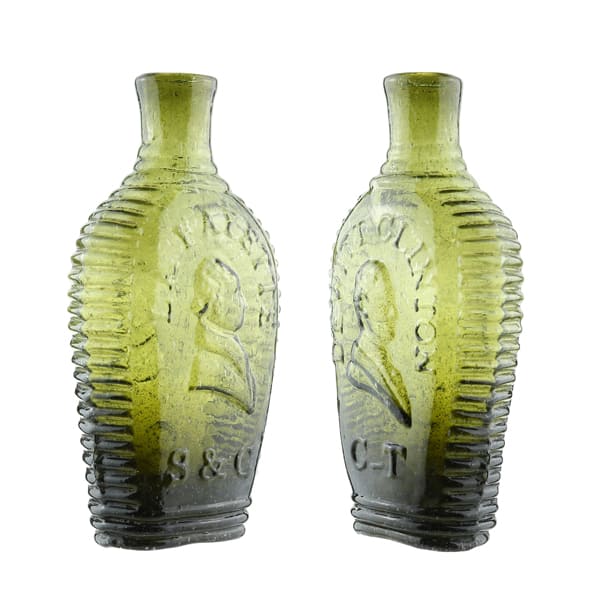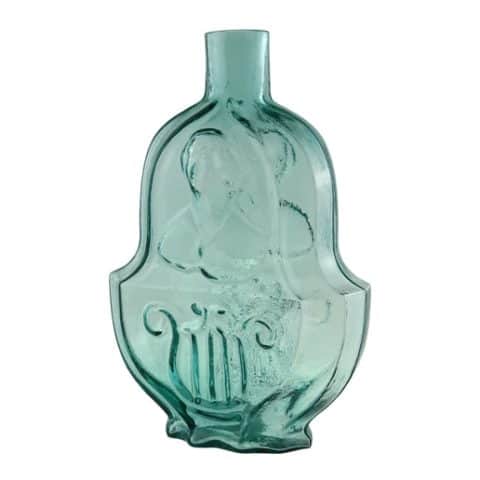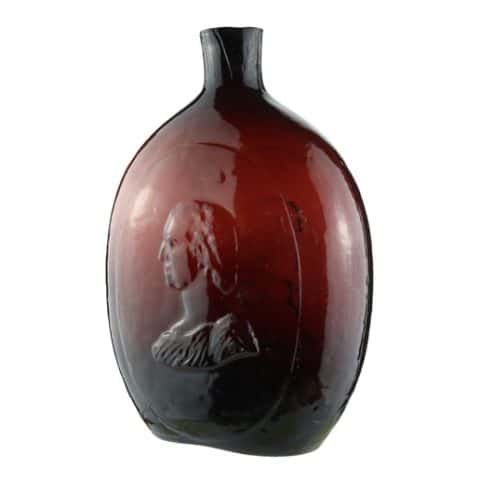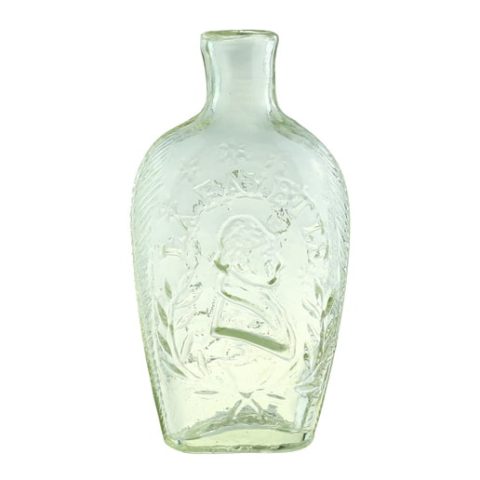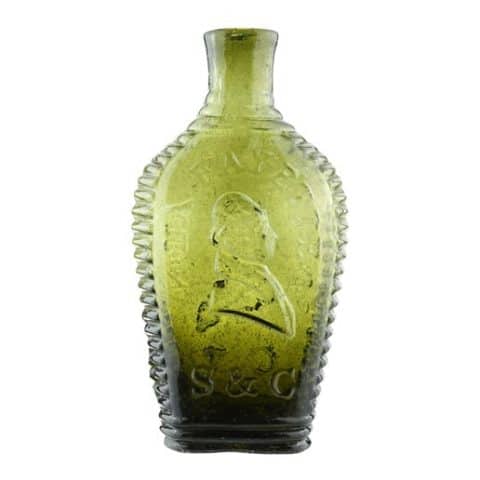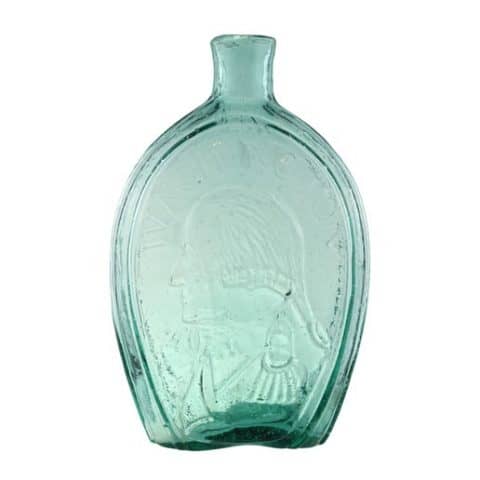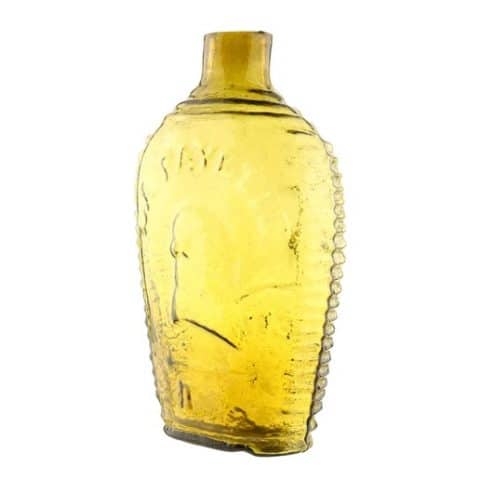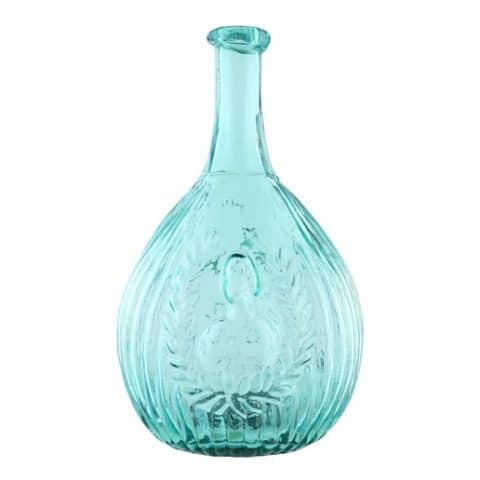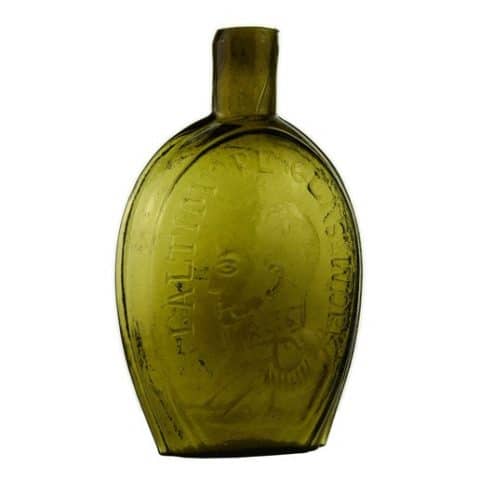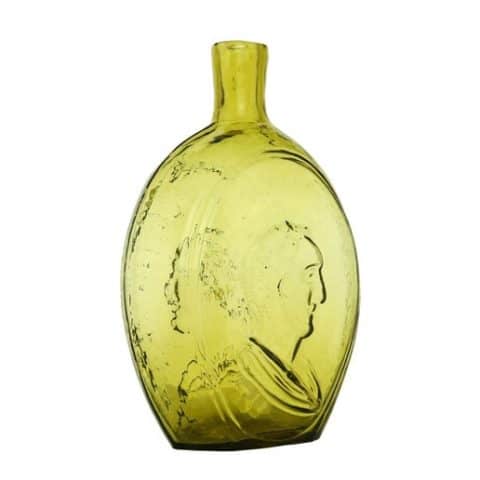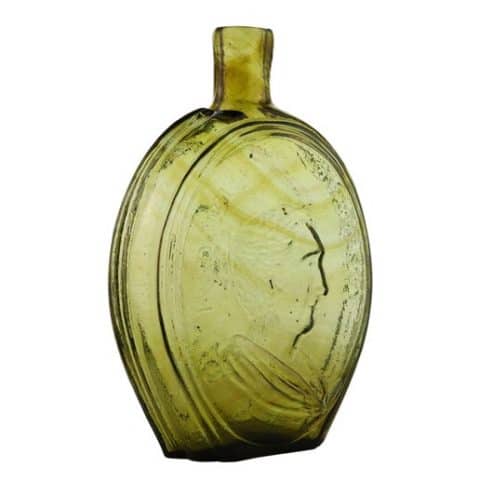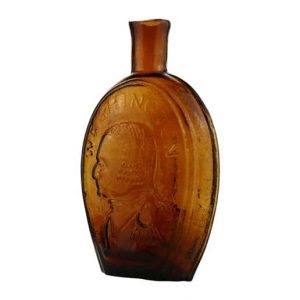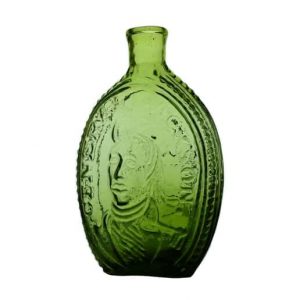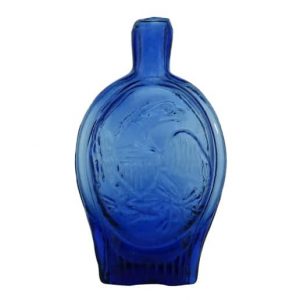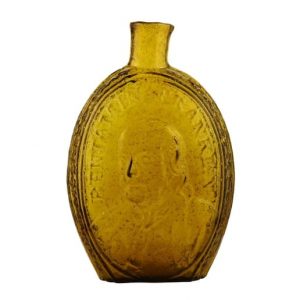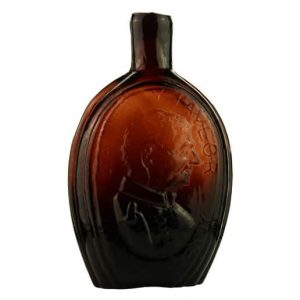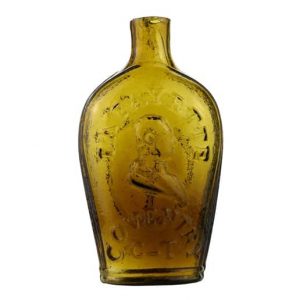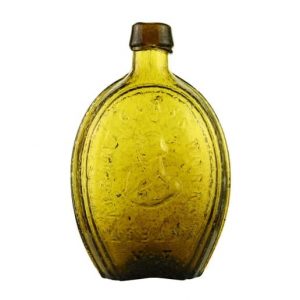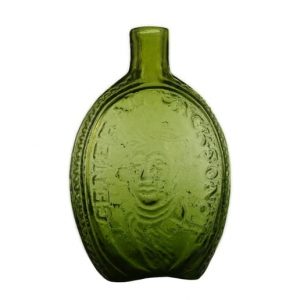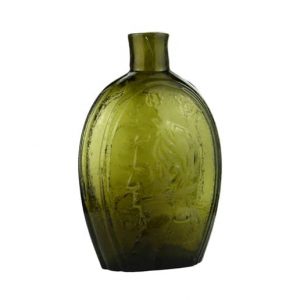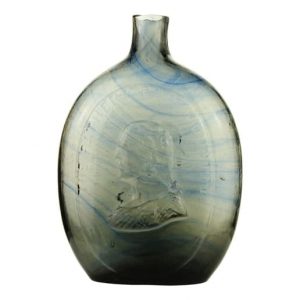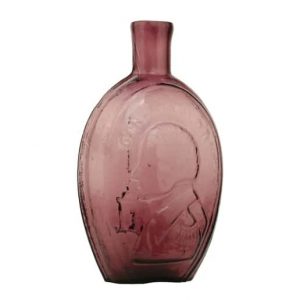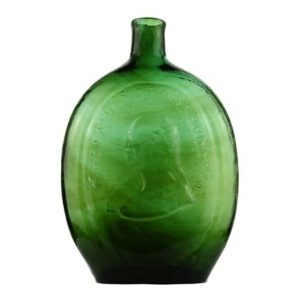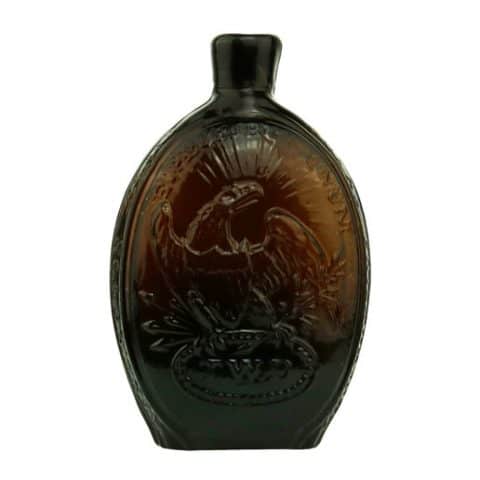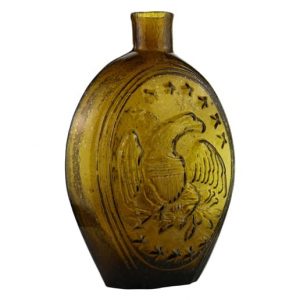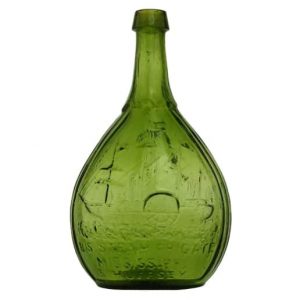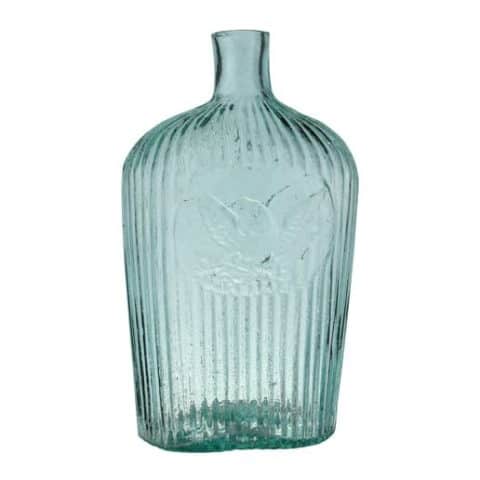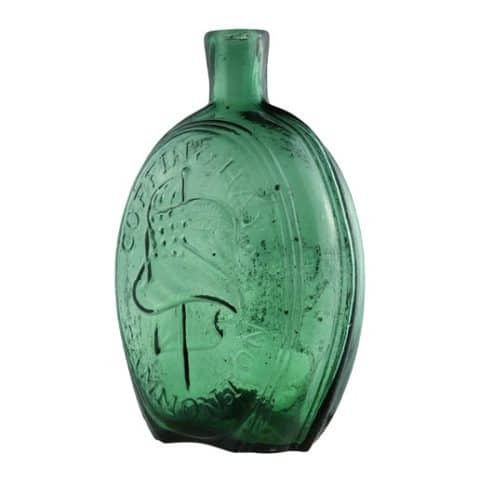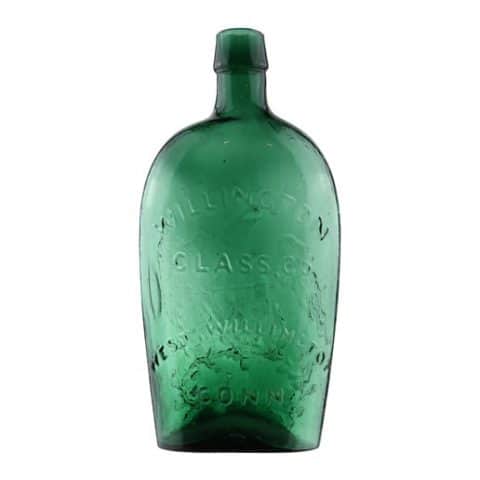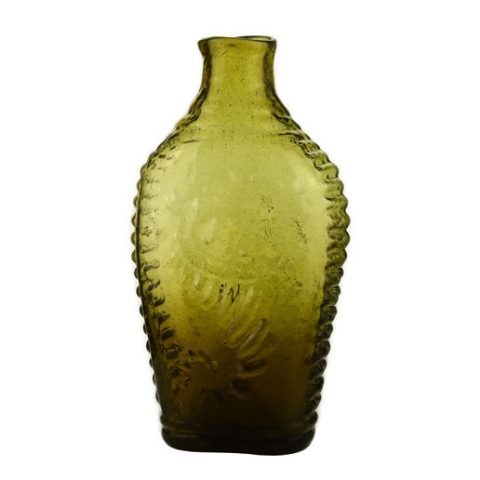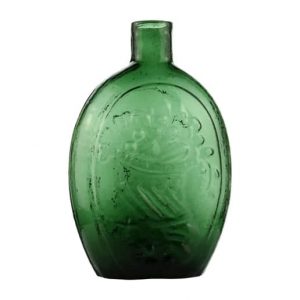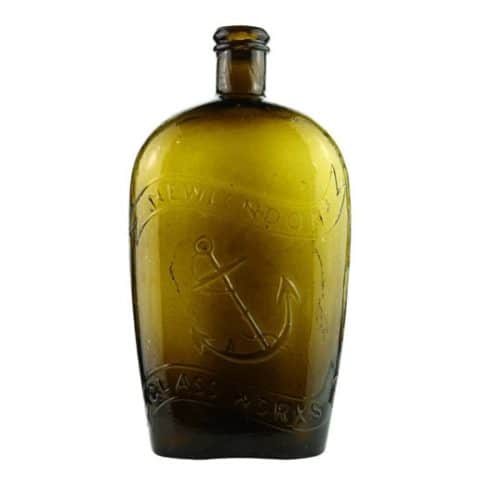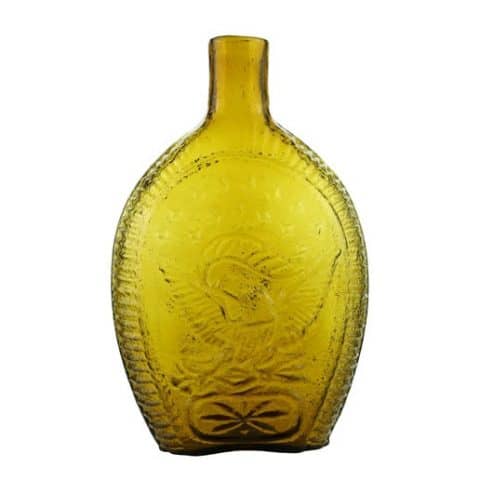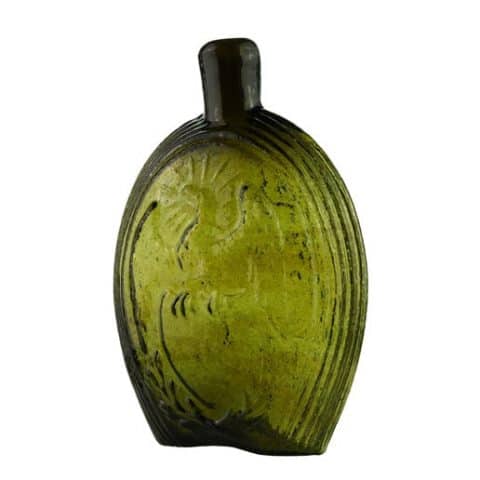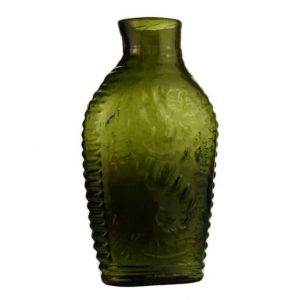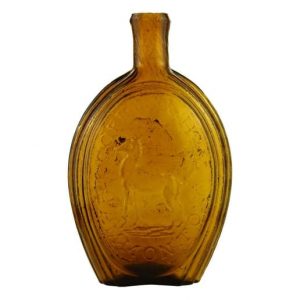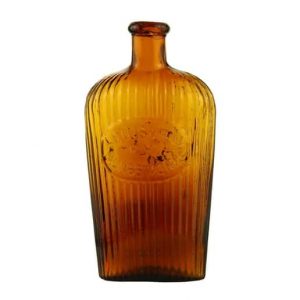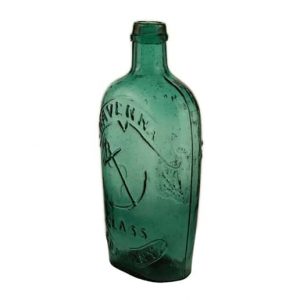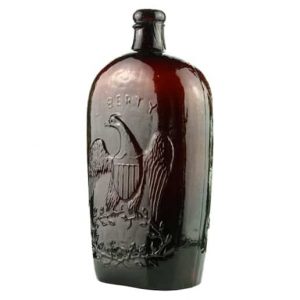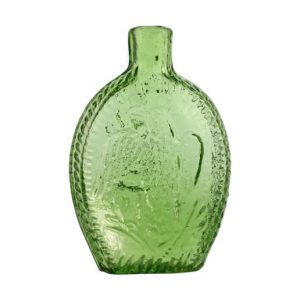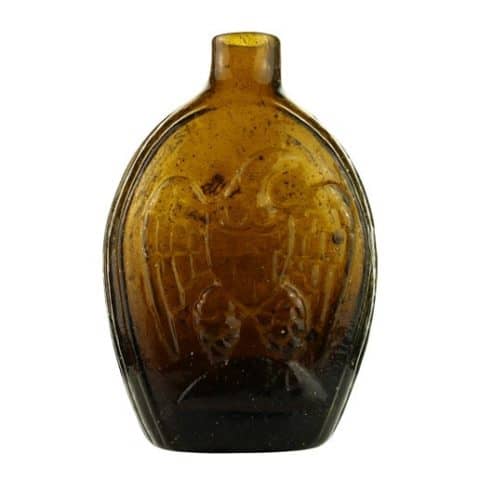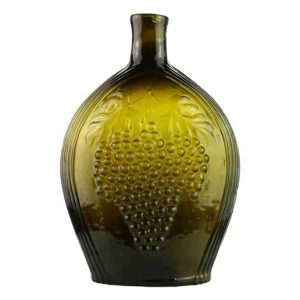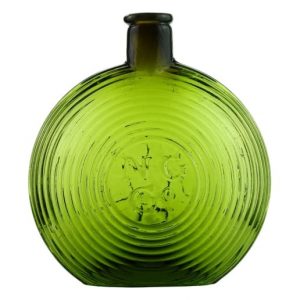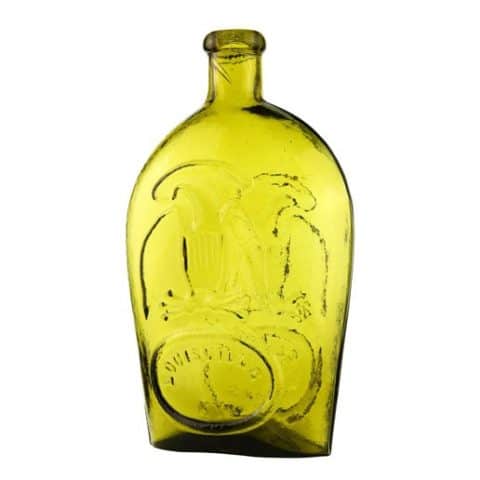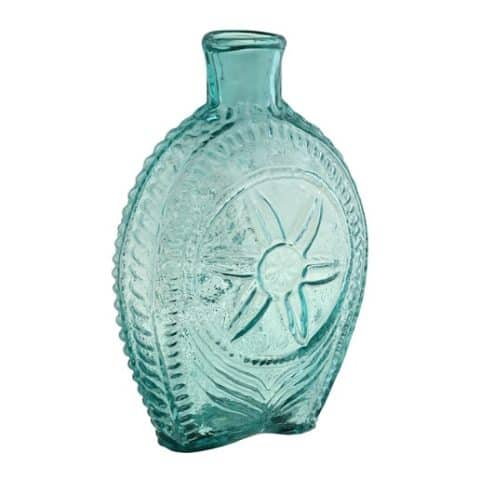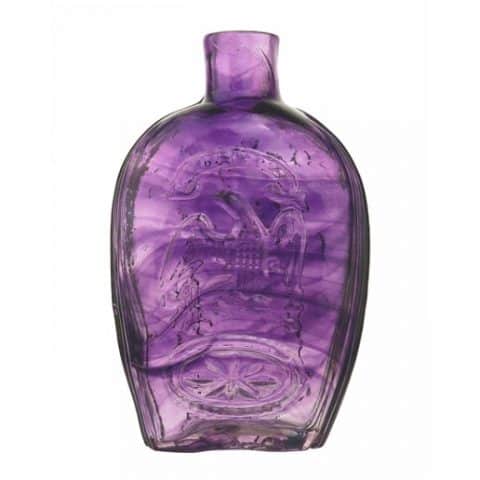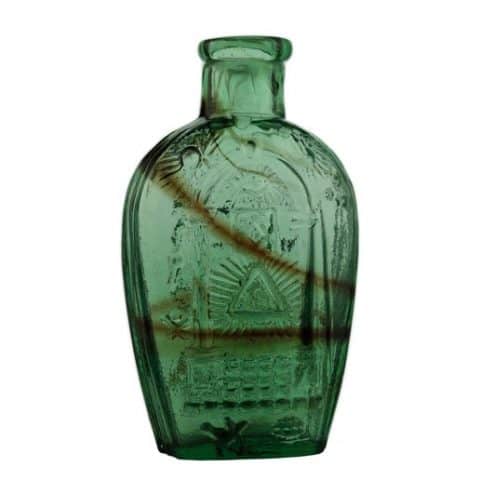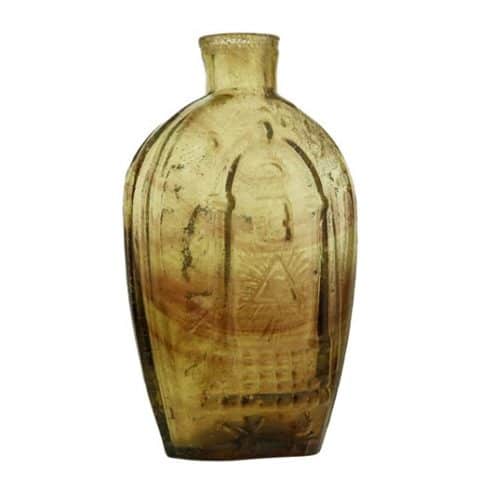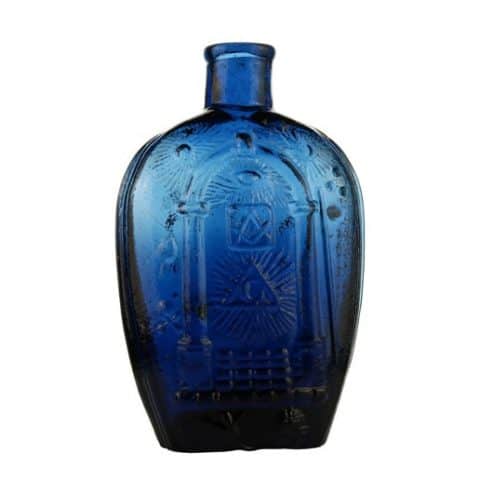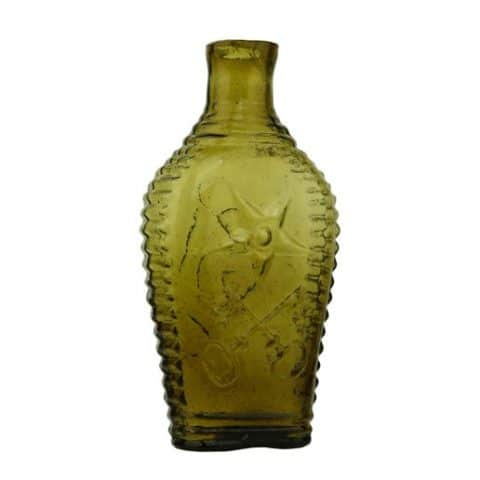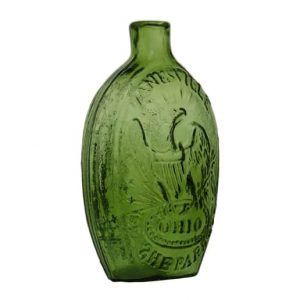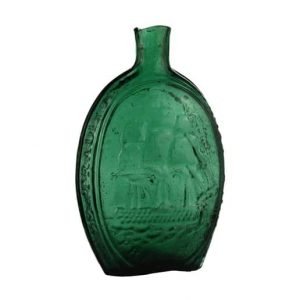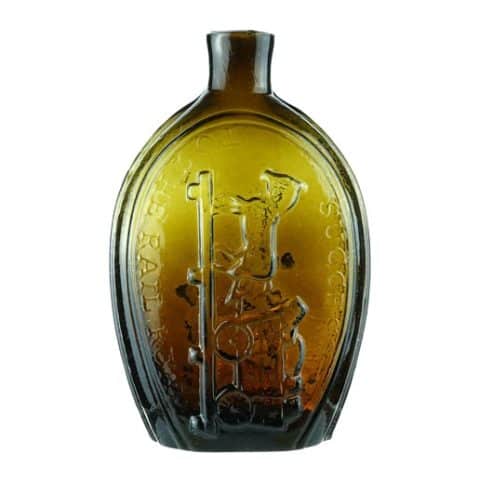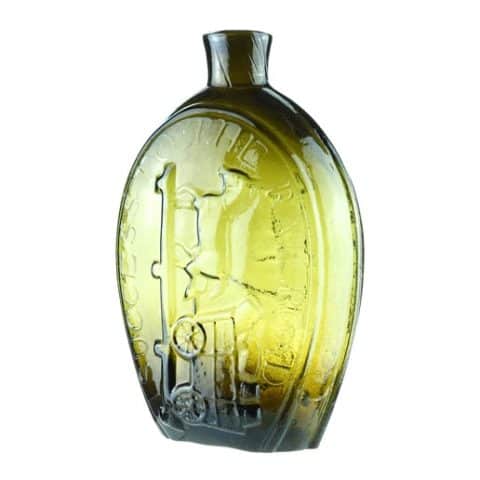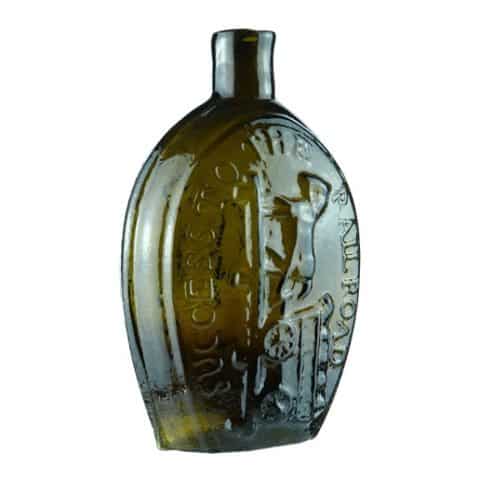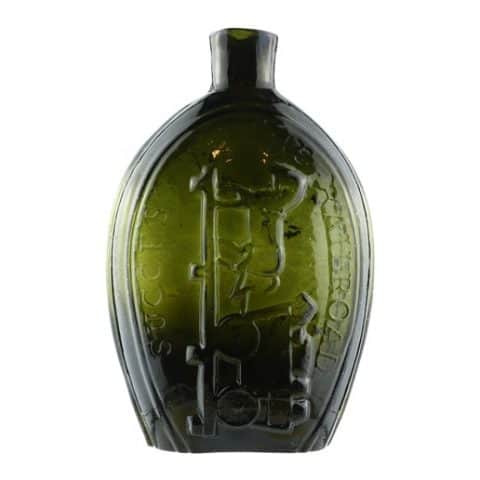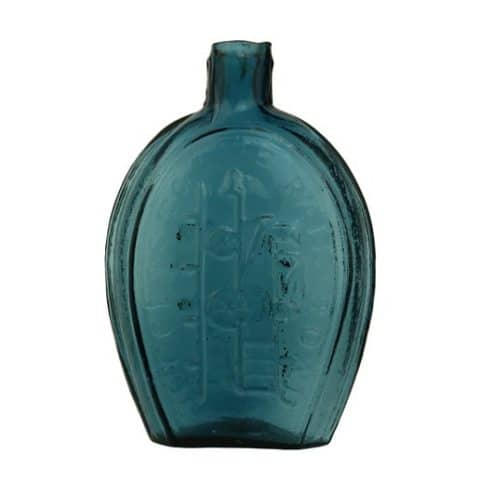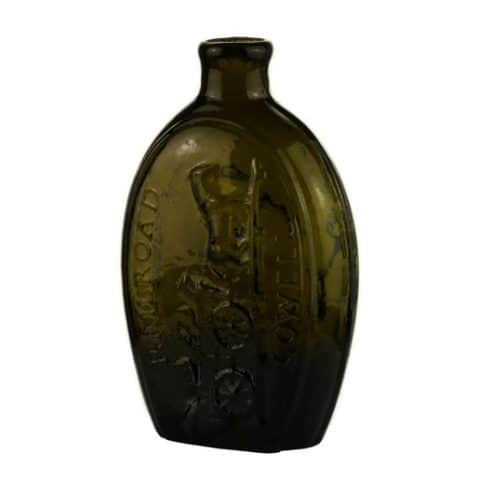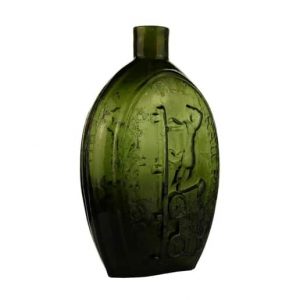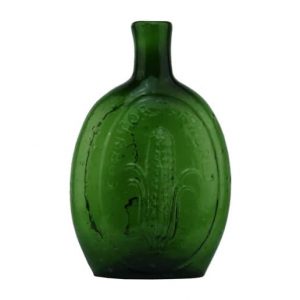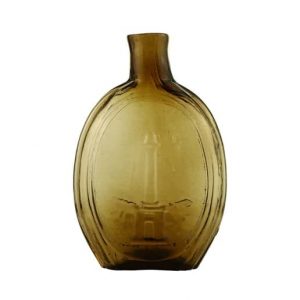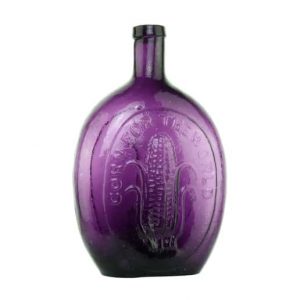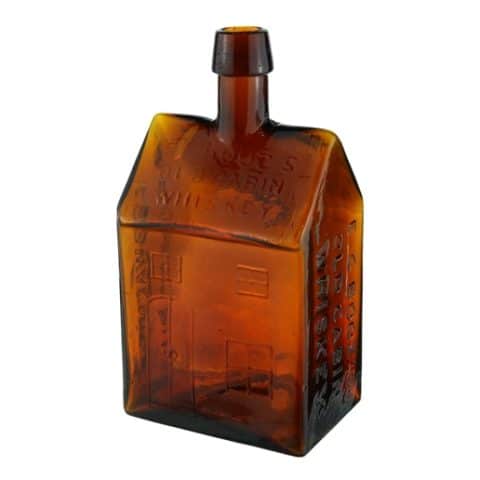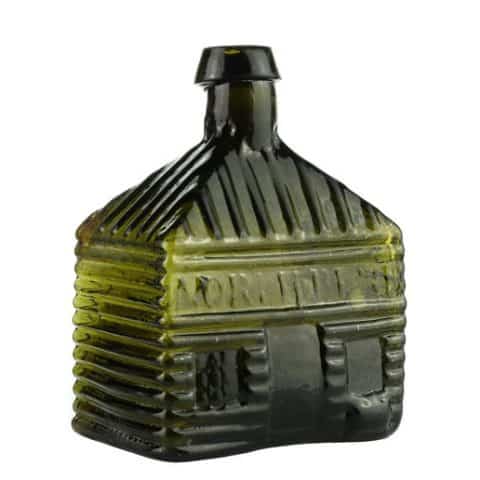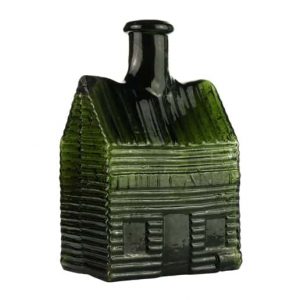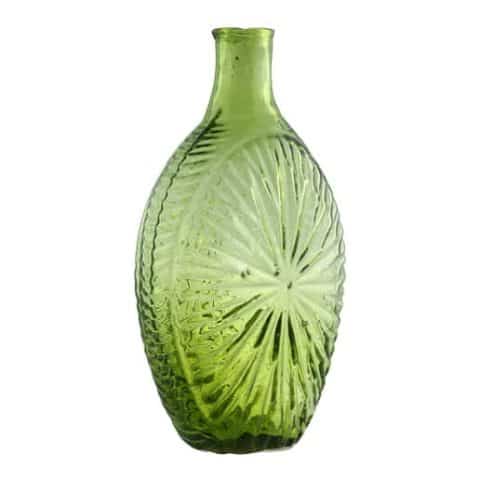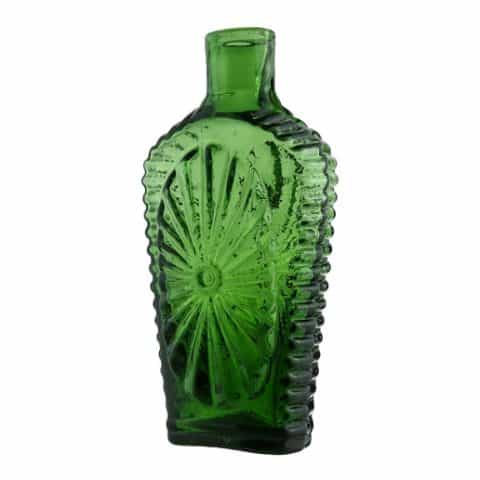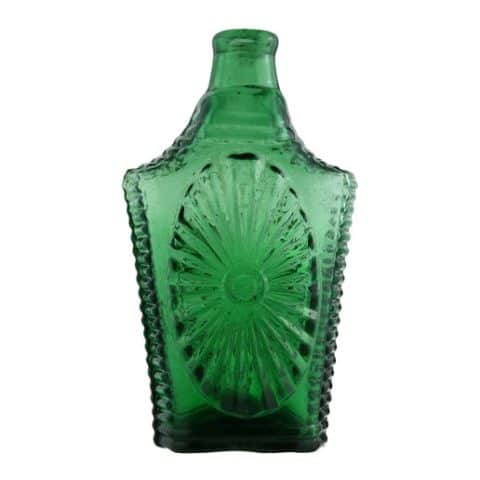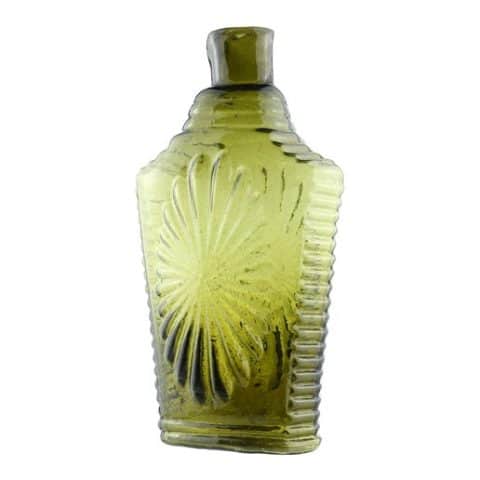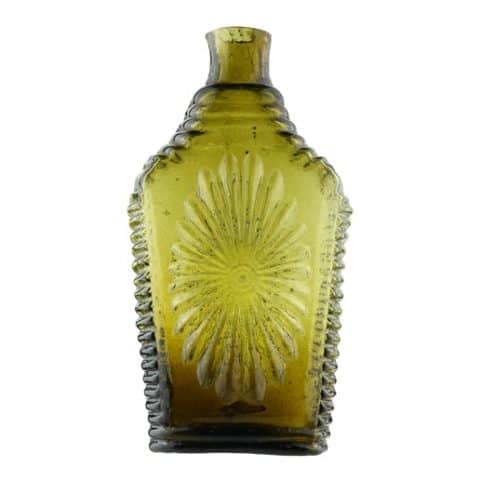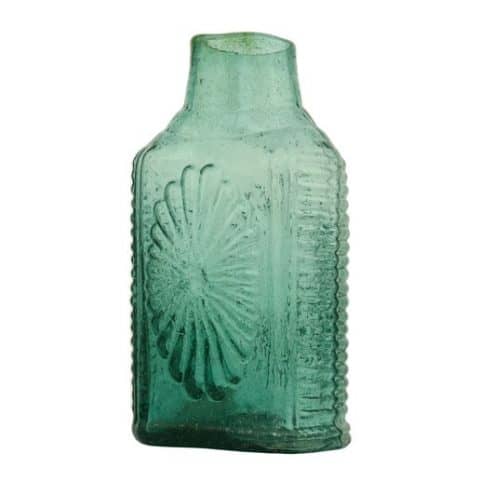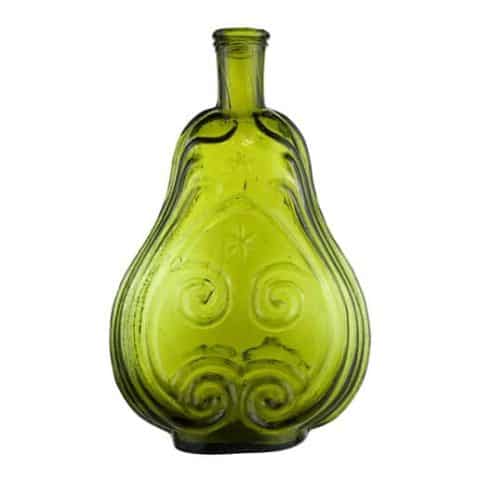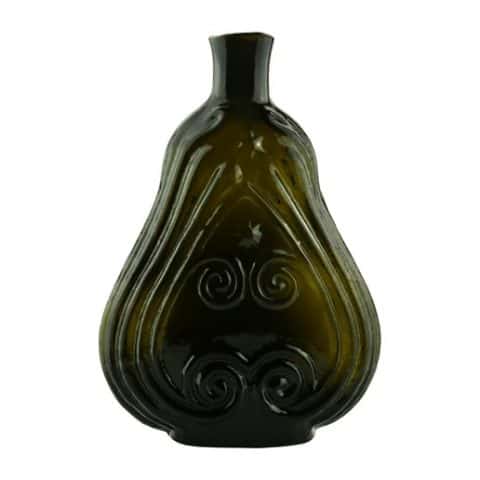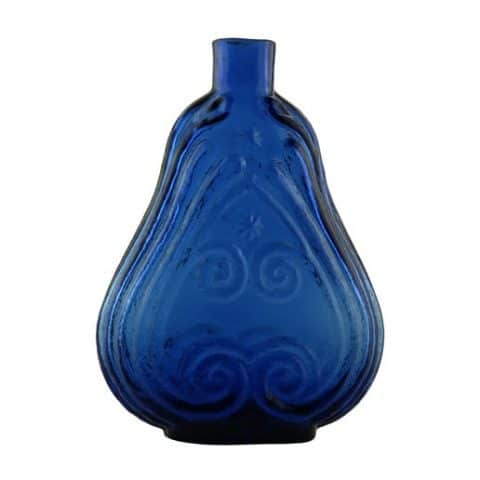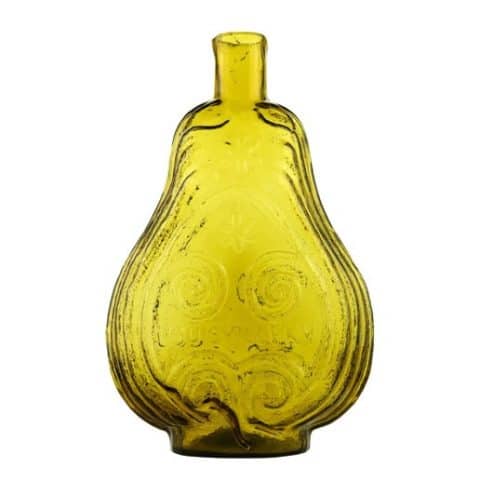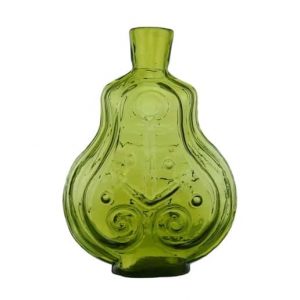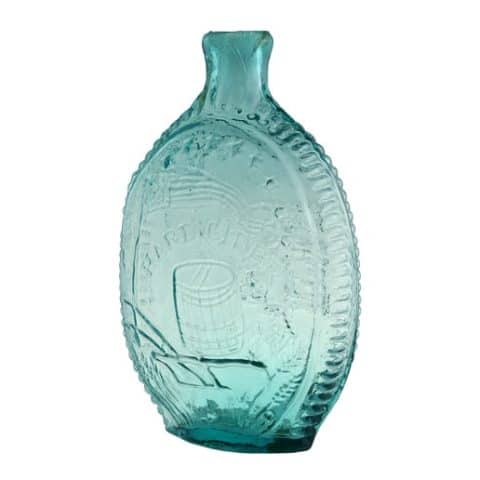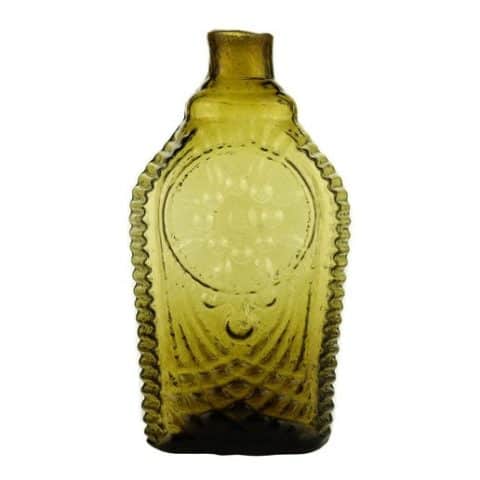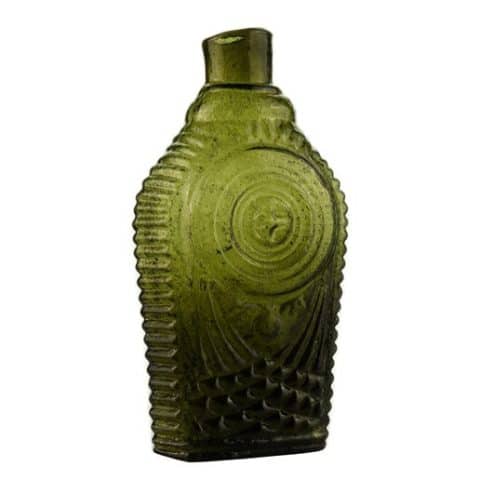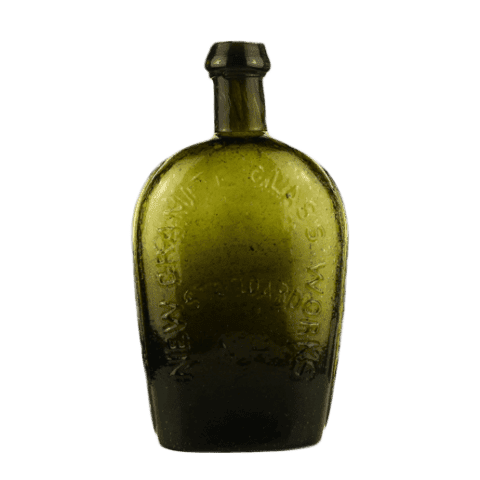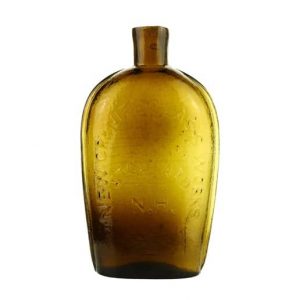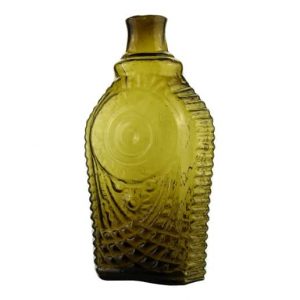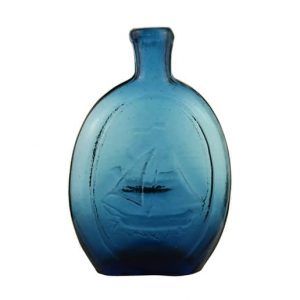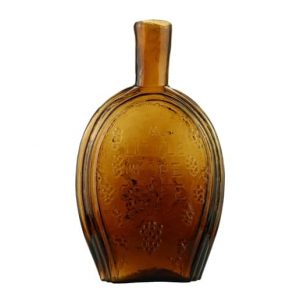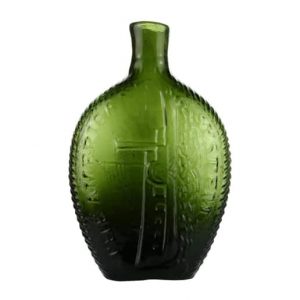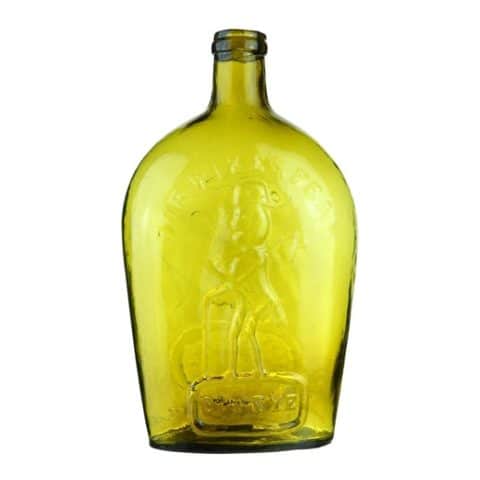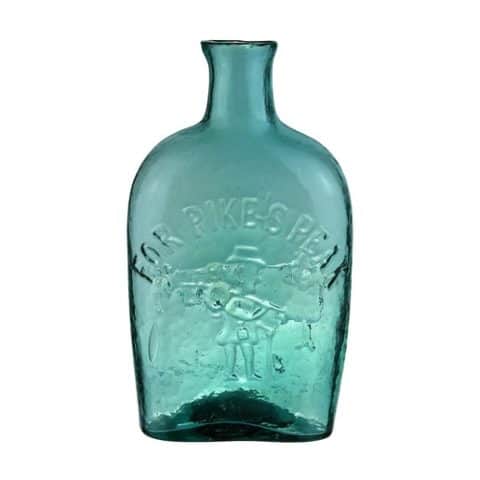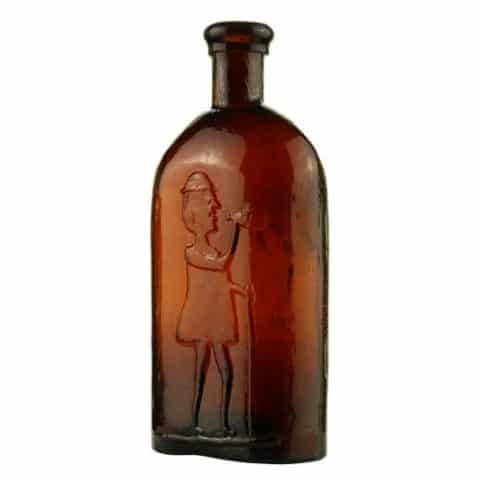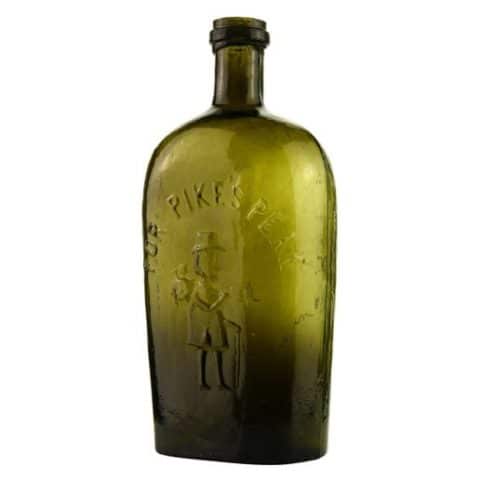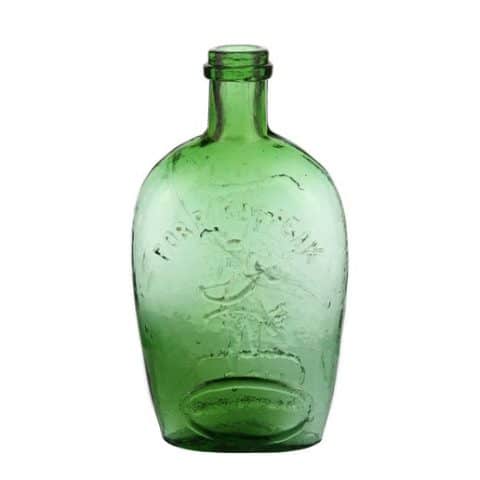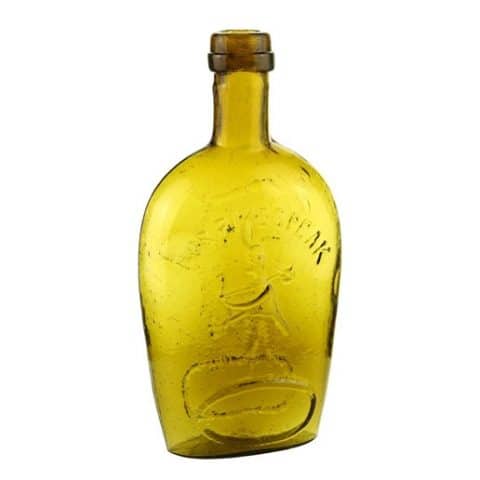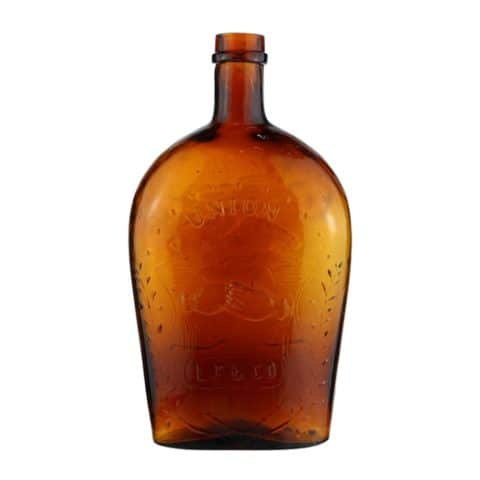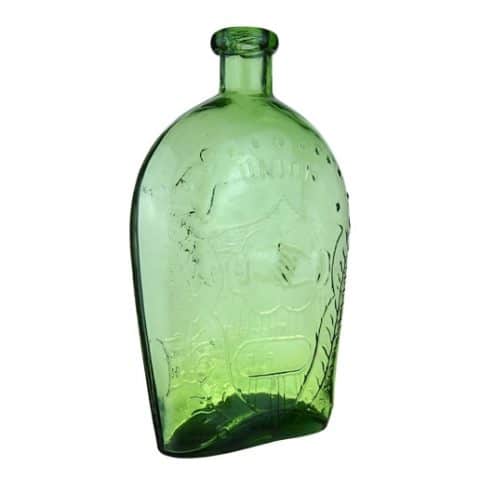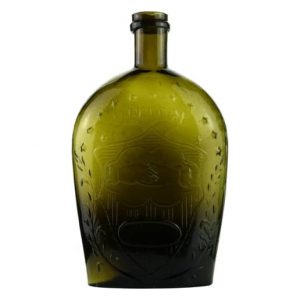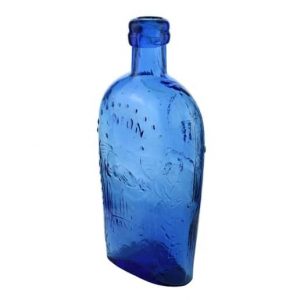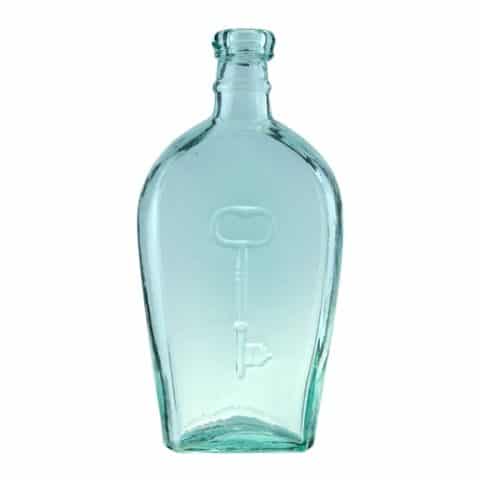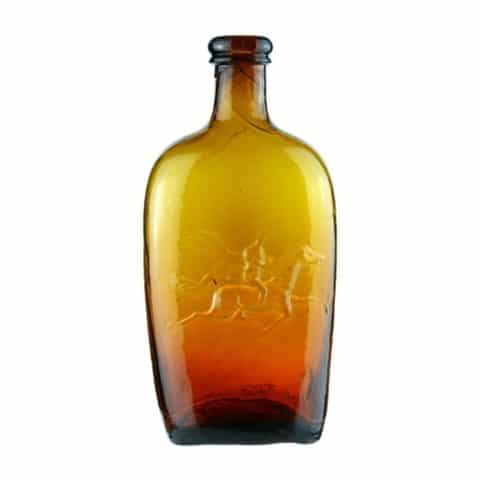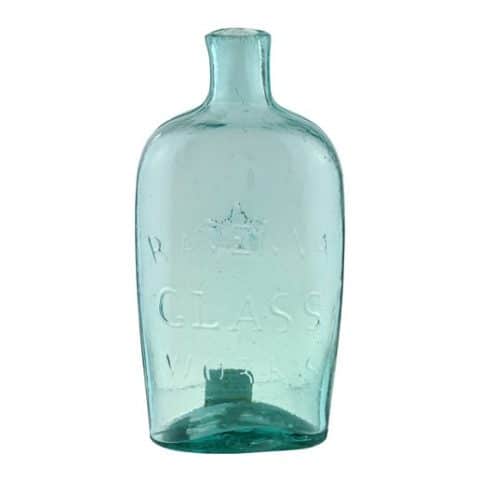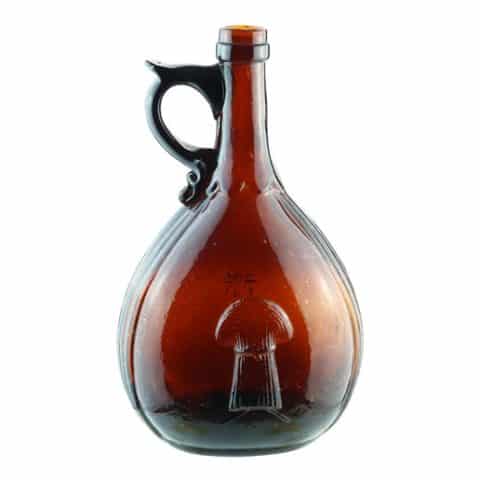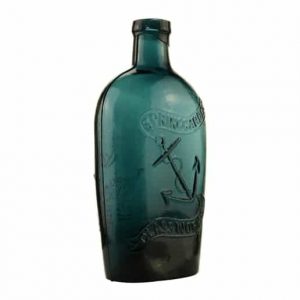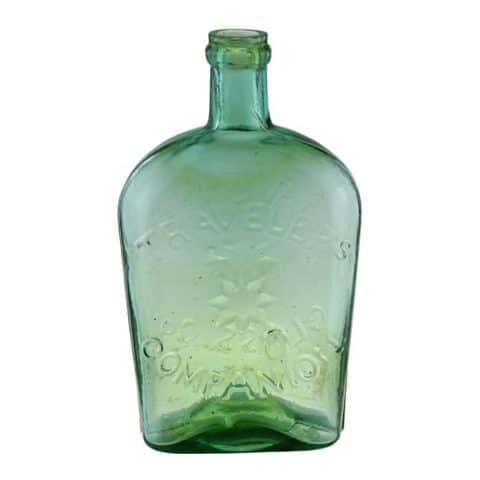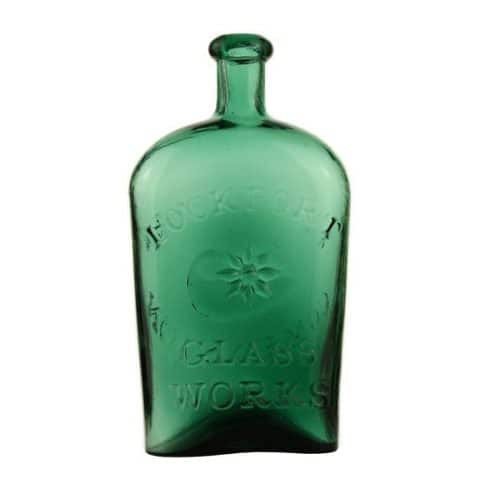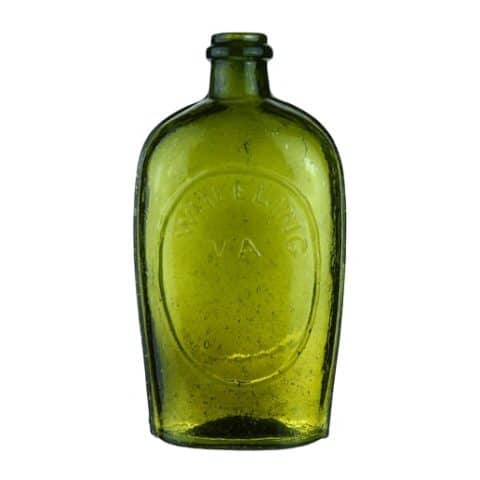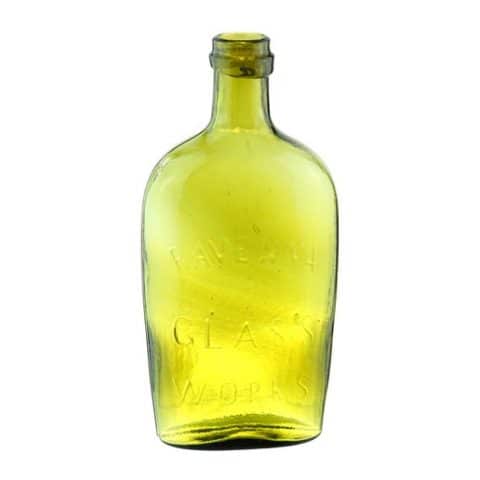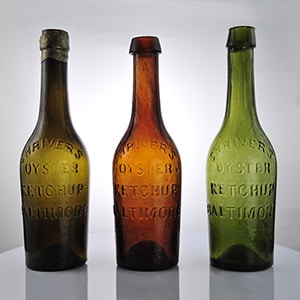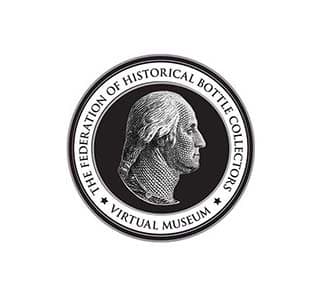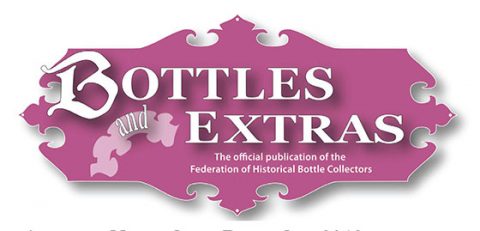GI-81 • “Lafayette” Bust of Lafayette “S & C” – “De Witt” Bust of Clinton “C-T” Portrait Flask
GI – 81
“Lafayette” Bust of Lafayette “S & C”
“De Witt” Bust of Clinton “C-T”
Portrait Flask
Coventry Glass Works, Coventry, Connecticut
Olive Green Half Pint
Provenance: Richard S. Ciralli Collection
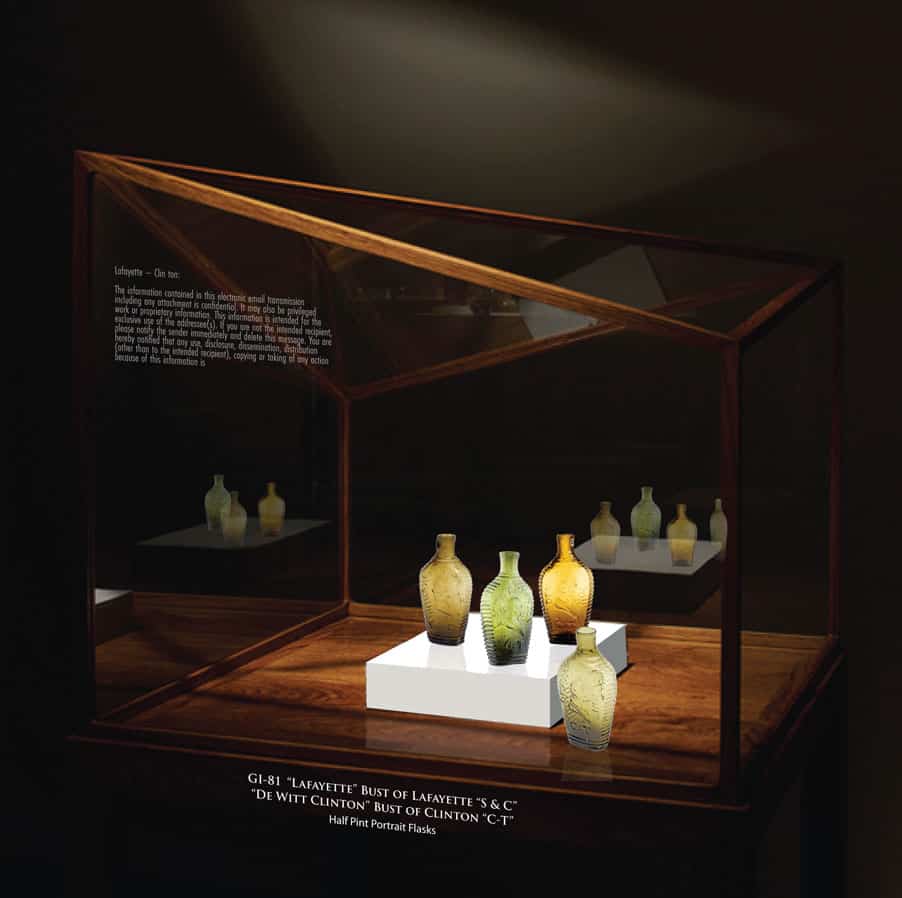
This extraordinary GI-81 half-pint was blown in a crisp, clear olive green glass that is outstanding in every respect. The flask was made by Thomas Stebbins and Rufus B. Chamberlin around 1825 at the Coventry Glass Works in Coventry, Connecticut.
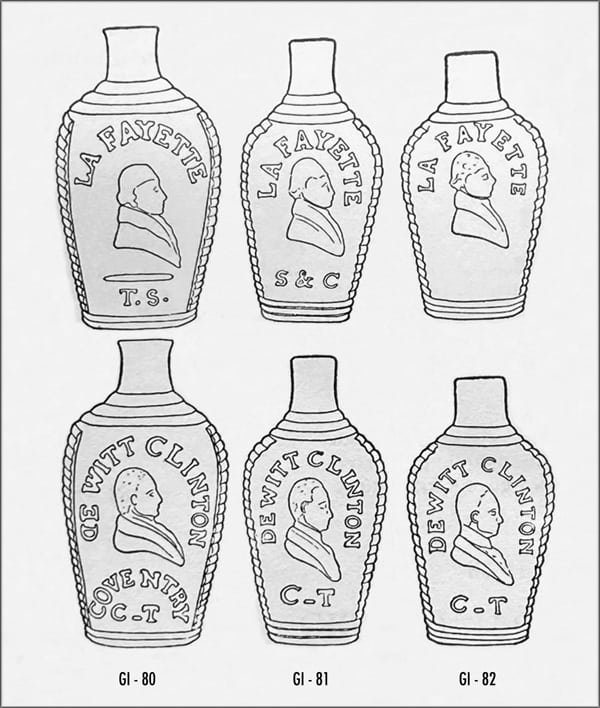
The GI-81 Clinton – De Witt half-pint flask is embossed on the obverse face with a small Lafayette profile facing right. The embossed copy ‘LA FAYETTE’ is positioned in a convex semicircle above the bust. Beneath the bust are centered embossed letters reading ‘S & C.’ The reverse side of the flask pictures an embossed small De Witt Clinton profile facing right. The embossed copy ‘DE WITT CLINTON’ is positioned in a semicircle around the bust. Beneath the bust is embossed copy reading ‘C – T’ that is centered in a straight line beneath. The flask edges are corrugated horizontally, with three corrugations extending around the flask at the base and junctures of the neck and body. The flask is found with a plain lip and pontil mark in glass colors such as olive, olive-yellow, yellow-olive, olive-amber, and emerald green.
See the museum example of a GI-80 pint “Lafayette” and Bust “T.S.” – “De Witt Clinton” and Bust “Coventry C-T” portrait flask
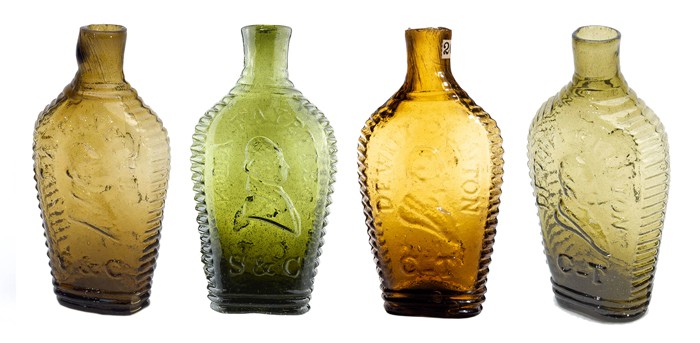
Coventry Glass Works
Seven men agreed to erect a glass factory in Coventry, Connecticut, on January 14, 1813, along the Willimantic River. Four of the men, Captain Nathaniel Root, Ebenezer Root Nathaniel Root Jr., and Joseph A. Norton, all of Coventry were not glassmakers. The group included Eli Evans, Thomas W. Bishop, and Uriah Andrews, glassblowers from East Hartford who had the experience running the day-to-day operations. Eli, Thomas, and Uriah were to use their expertise where needed in the glass factory and be compensated at $26 per month and $45 for each year they worked in the plant. In 1816, there was an agreement to expand by adding buildings.
Thomas Stebbins was operating the glassworks by 1820. He may have been the first glass-house owner who adapted the portraits of well-known men to grace his whiskey flasks. You will see his initials “T. S.” on our GI- 80 example and GI-83 and GI-84 flasks. It is believed that the “De Witt Clinton” and “Lafayette” flasks were made to celebrate the opening of the Erie Canal and the visit of the French hero Lafayette to America in 1825.
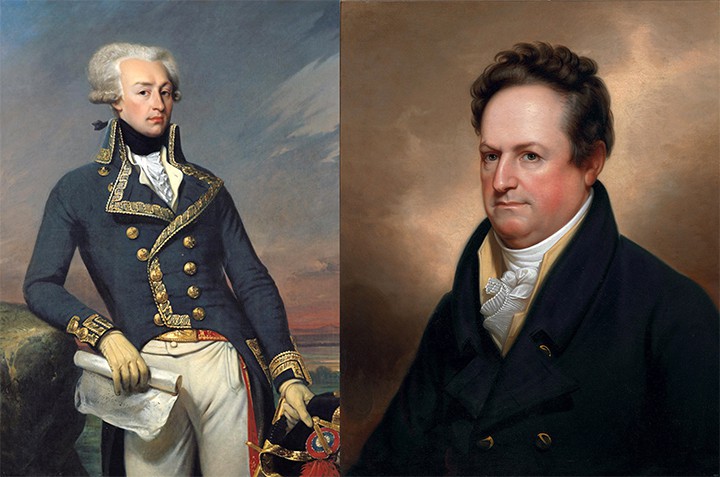
The Marquis de La Fayette, known in the United States as Lafayette, was a French aristocrat and military officer who fought in the American Revolutionary War, commanding American troops in several battles, including the siege of Yorktown. After returning to France, he was a crucial figure in the French Revolution of 1789 and the July Revolution of 1830. He is considered a national hero in both countries. In 1824, President James Monroe invited him to the United States as the nation’s guest, where he visited all 24 states in the union and met a rapturous reception.
De Witt Clinton was governor of the State of New York at this time. There was no particular bond between Lafayette and Clinton, but Lafayette’s stay coincided with the completion of the Erie Canal. More than any other man, Clinton was responsible for constructing this vital waterway, “Clinton’s Ditch,” which solved the sore problem of commerce between the midwest and the east.
The embossed “S. S.” initials on some Lafayette flasks could be the entry of a brother in 1825 to the glassworks or possibly a mistake. Later in 1825, Rufus B. Chamberlin joined the firm, and they were now Stebbins & Chamberlin. The embossed initials “S & C” is found on some flasks such as GI-81, GI-85, GI-86, and GI-87. In 1828, Jasper Gilbert, John Turner, and Rufus B. Chamberlin, with John Turner’s brother Levi took control forming Gilbert Turner & Company. Lack of wood is said to be the reason for the glassworks closing in 1848, but accounting books seem to indicate sales into 1849.
See the museum example of a GI-86 “Lafayette” And Bust – Liberty Cap Portrait Flask
Primary Image: GI-81 “Lafayette” Bust of Lafayette “S&C” – “De Witt Clinton” Bust of Clinton “C-T” Portrait Flask imaged on location by the FOHBC Virtual Museum midwest studio led by Alan DeMaison.
Support Image: Auction Lot 67: half-pint, embossed “LA FAYETTE / (bust) / S & C” on the obverse, and “DE WITT CLINTON / (bust) / C-T” on reverse, sheared mouth, rough pontil mark. Strong embossing. Strong yellow-olive with amber tones. Stebbins & Chamberlain, Coventry Glassworks (1815-1848), Coventry, Connecticut. Circa: 1820-1848. Mouth with shallow chip to top and area of roughness to the interior, most probably as made, some light high-point wear. 6 1/2″ H. From the estate collection of Russell and Doris Evitt, Jackson, CA., Literature: McKearin/Wilson – American Bottles & Flasks, pp. 544, 545. – Jeffrey Evans, Jeffrey S. Evans & Assoc., Feb 28, 2020
Support Image: Auction Lot 43: “Lafayette” And Bust – “De Witt Clinton” And Bust Portrait Flask, Coventry Glass Works, Coventry, Connecticut, 1824-1825. Light to medium olive-yellow, sheared mouth – pontil scar, half pint; (1/8 inch fissure across sand grain in corrugated ribs). GI-81 A most appealing example having great character, color and embossing. Generally fine condition. Robert and Janice Weekes collection. – Norman Heckler Jr. & Sr., Norman C. Heckler & Company, Auction #167
Support Image: Auction Lot 2: “Lafayette” And Bust – “De Witt Clinton” And Bust Portrait Flask, Coventry Glass Works, Coventry, Connecticut, 1824-1825. Olive yellow, sheared mouth – pontil scar, half pint; (several 1/4 inch hairline fissures around a large bubble to the right of “Lafayette” and a flat 1/4 inch chip on the letter “t”). GI-81 Fine color, good condition. Warren “Bud” Lane collection. – Norman Heckler Jr. & Sr., Norman C. Heckler & Company, Auction #167
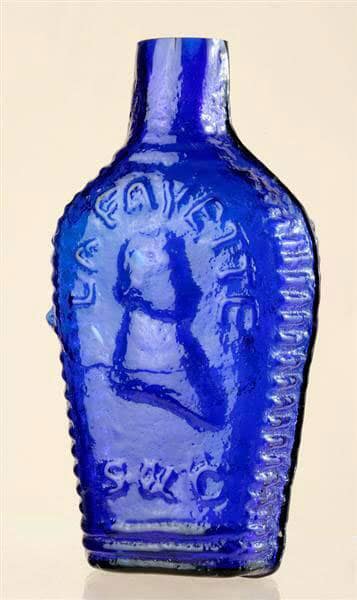
Support Image: Stebbins & Chamberlain figured flask, 1825-1830, Obverse: “DE WITT CLINTON / C-T” in relief: on reverse: “LA FAYETTE / S & C” Deep sapphire blue non-lead glass figured flask blown in a two-part mold (McKearin GI-81), with straight finish, profile of Lafayette on obverse, profile of De Witt Clinton on reverse, corrugations on sides and above base, and faint pontil mark. Coventry, Connecticut, Overall: 6 × 3 × 2 1/4 in. Purchased from Elie Nadelman 1937. This object was once part of the folk art collection of Elie Nadelman (1882-1946), the avant-garde sculptor. From 1924 to 1934, Nadelman’s collection was displayed in his Museum of Folk Arts, located in the Riverdale section of the Bronx. The Historical Society purchased Nadelman’s entire collection in 1937. Last exhibited: “French Founding Father: Lafayette’s Return to Washington’s America,” New-York Historical Society, November 16, 2007-August 10, 2008. – New-York Historical Society, Museum & Library Note: The FOHBC will work with the NYHS to amend their listing.
Support: Reference to American Bottles and Flasks and Their Ancestry by Helen McKearin and Kenneth M. Wilson, Crown Publishers Inc., New York, 1978
Support: Reference to Coventry Glass Works by Bill Lockhart, Beau Schriever, Bill Lindsey, and Carol Serr
Support: Reference to Historical Flasks, American Primitive Portraits in Glass by Helen McKearin, October 1942, American Collector magazine, reprinted in Collectors Weekly, April 3, 2009
Support Image: Portrait, Lafayette as a lieutenant general in 1791, by Joseph-Désiré Court (1834)
Support Image: Rembrandt Peale’s portrait of DeWitt Clinton, a politician, and naturalist who served as United States Senator and the sixth Governor of New York. oil on canvas, 28-5/8 x 23-3/8 in. Painted circa 1823
Join the FOHBC: The Virtual Museum is a project of the Federation of Historical Bottle Collectors (FOHBC). To become a member.

